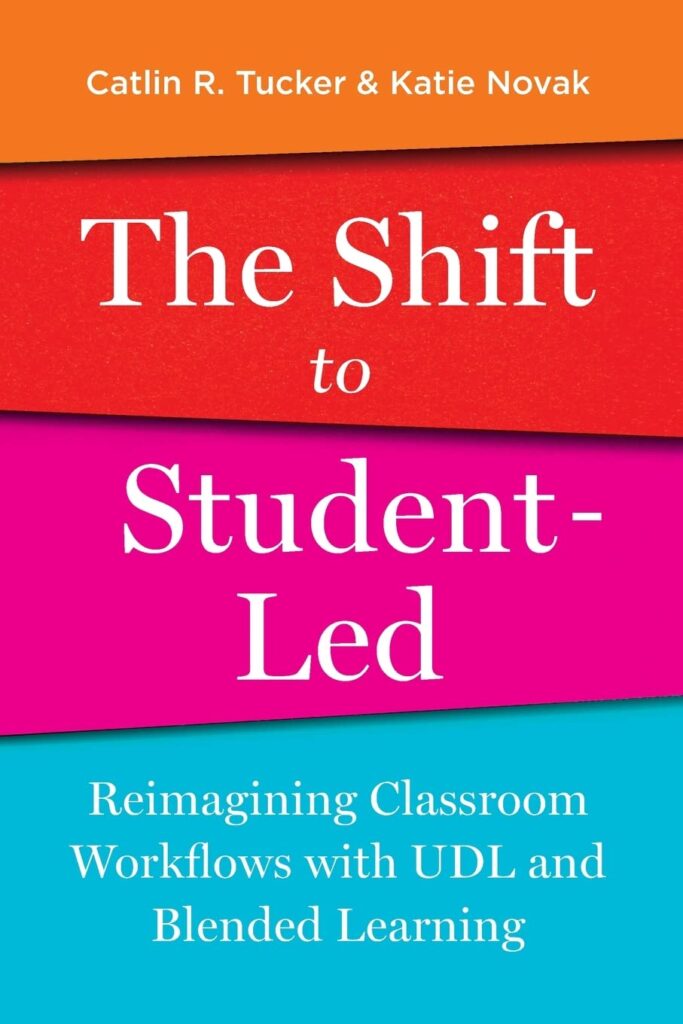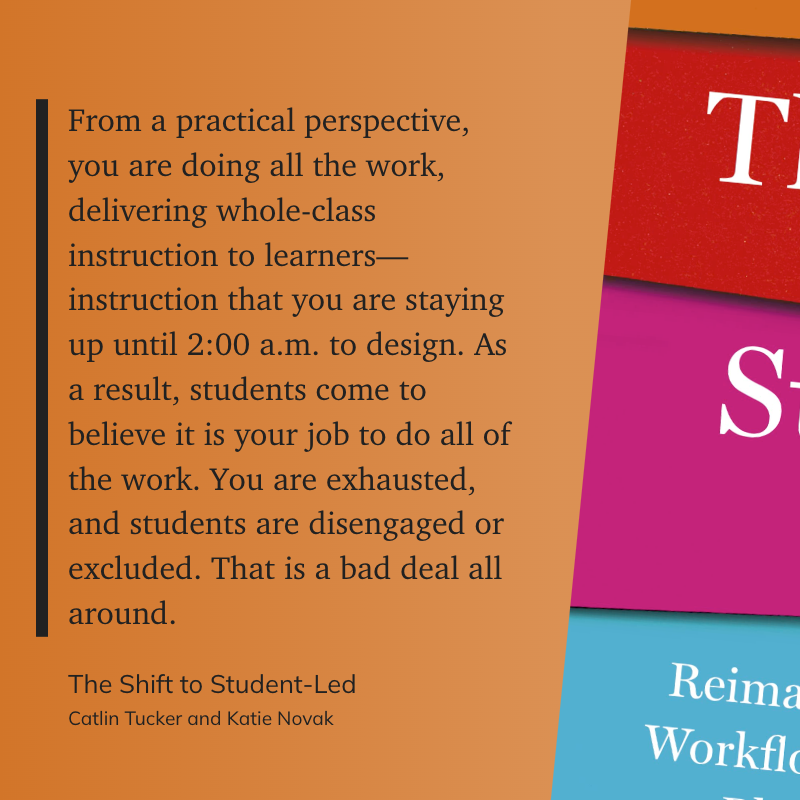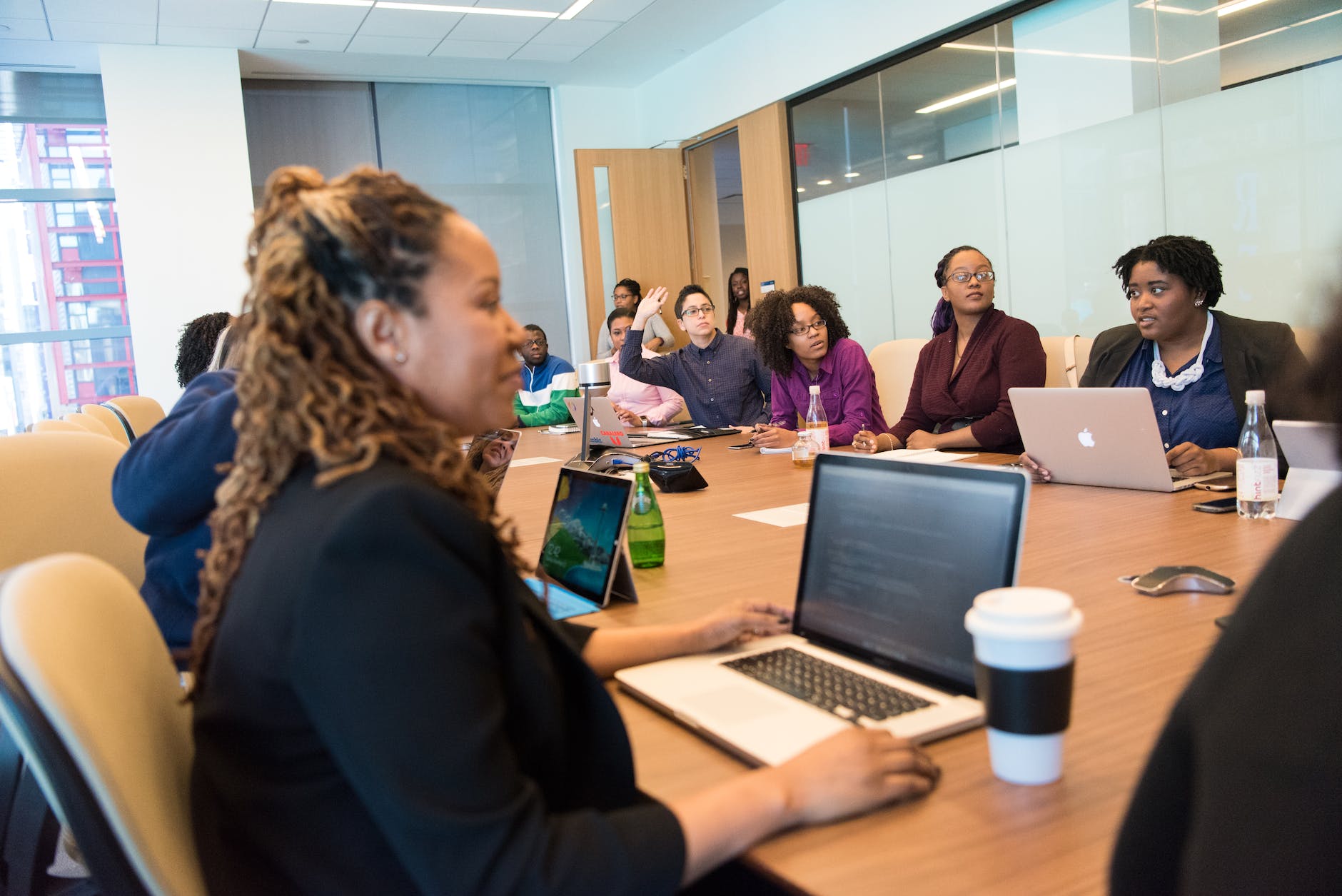Why This Book Should Be on Every Teacher’s Radar
If you’ve ever found yourself carrying the full weight of your classroom on your shoulders—exhausted, overextended, and wondering if your students are truly engaged—The Shift to Student-Led by Catlin R. Tucker and Katie Novak offers a powerful path forward.
By blending Universal Design for Learning (UDL) with blended learning strategies, this book helps teachers transition from being the center of the classroom to becoming learning designers and facilitators, without sacrificing structure, rigor, or accountability.
Let’s break it down 👇
- Tucker, Catlin R. (Author)
- English (Publication Language)
- 270 Pages – 11/09/2022 (Publication Date) – Impress (Publisher)
🔑 Big Ideas in The Shift to Student-Led
- Empowers learners to take charge of their education through student-led workflows that build agency, motivation, and metacognition.
- Aligns with UDL principles, offering multiple ways for students to access content, express learning, and stay engaged.
- Supports teacher sustainability with practical tools that reduce burnout and promote shared responsibility in the classroom.
- Includes ready-to-use templates and reflection tools for immediate implementation—in class or in PLCs.
What Are Student-Led Workflows?
Tucker and Novak outline 10 specific shifts that flip the script on traditional classroom practices. A few standout transformations:
| From… | To… |
|---|---|
| Sit-and-get lessons | Inquiry-based discovery |
| Whole-group discussions | Student-facilitated conversations |
| Solo assignments | Projects with authentic audiences |
| Teacher-led feedback | Student self-assessment & reflection |
| Private practice | Peer-created practice tasks |
Each shift includes step-by-step guides, examples, and tools to make it manageable, even in busy classrooms with diverse learners.
🎯 Why This Matters Now (More Than Ever)
Teaching is hard. Teaching after a pandemic, amid ongoing changes and rising needs? Even harder.
This book isn’t just about pedagogy—it’s about reclaiming joy in your practice and building classrooms where students are doing the work of learning. That includes:
- Meeting diverse needs without creating 30 different lesson plans.
- Building life-ready skills like reflection, goal-setting, and collaboration.
- Creating space for student voice, choice, and autonomy.
Who This Book Is Perfect For
👩🏫 K–12 Teachers looking to create more student-driven classrooms
🤝 Instructional Coaches supporting PLCs or teacher growth cycles
🏫 School Leaders designing systems that promote learner agency
🎓 Pre-service Teachers & Faculty studying modern learning design
Free Resources to Get You Started
- ✅ Templates for Choice Boards, Self-Assessments, and Project Planning
- 🎯 Book Club Discussion Guide for PLCs
- 💻 Online Courses & Webinars with Tucker and Novak
- 📚 Downloadable tools embedded in each chapter for immediate use
Ready to Start Small? Here’s How 👣
- Pick one workflow to try—maybe feedback or group discussions.
- Invite students into the process: What helps them learn? What’s not working?
- Use reflection check-ins to adjust and improve.
- Celebrate growth—with student artifacts, voice recordings, or video showcases.
Classroom Scenarios That Just Work
- Middle School ELA: Students run peer-led literature circles with discussion protocols
- High School Science: Learners build digital flashcard decks and quiz each other
- Upper Elementary: Students design mini passion projects and present them to families
Final Thoughts: Why This Shift Matters
This isn’t a silver bullet, but it is a breath of fresh air. The Shift to Student-Led gives educators the tools to create meaningful, student-centered learning without burning out. You’ll find yourself doing less of the heavy lifting and more of the inspiring.
And that’s the kind of classroom every student—and teacher—deserves.
Want to Dive Deeper?
📘 Read: The Shift to Student-Led: Reimagining Classroom Workflows with UDL and Blended Learning
🎧 Listen: Podcast Episode with Tucker & Novak
📺 Watch: Video on Small-Group Discussion Shifts
🛠️ Access Templates + Book Club Kit
- English (Publication Language)
- 204 Pages – 07/30/2024 (Publication Date) – Cast, Inc. (Publisher)
- Novak, Katie (Author)
- English (Publication Language)
- 196 Pages – 05/17/2022 (Publication Date) – Cast, Inc. (Publisher)
- Meyer, Anne (Author)
- English (Publication Language)
- 238 Pages – 12/17/2013 (Publication Date) – Cast Incorporated (Publisher)











